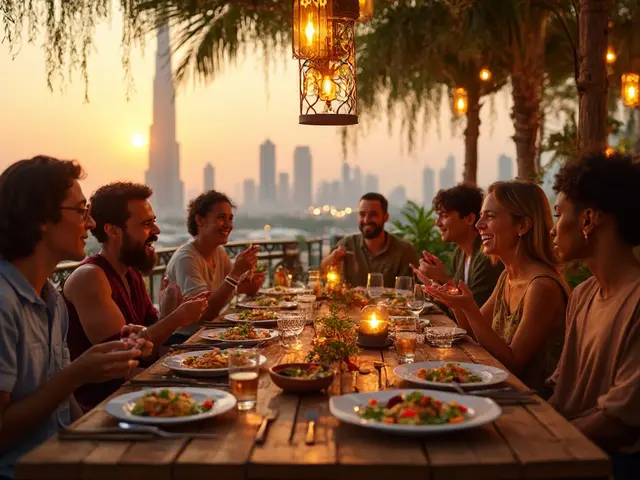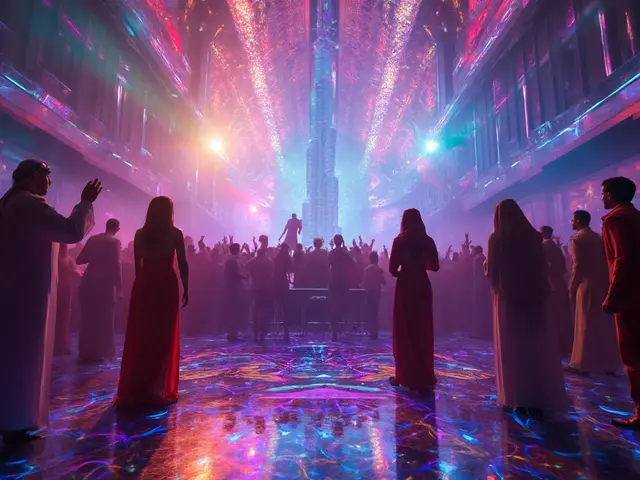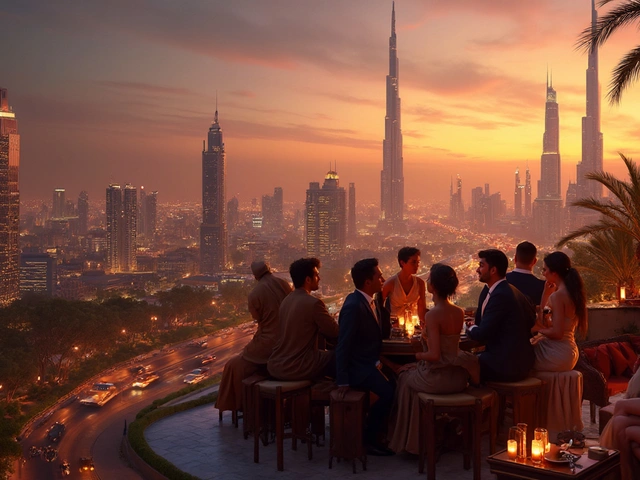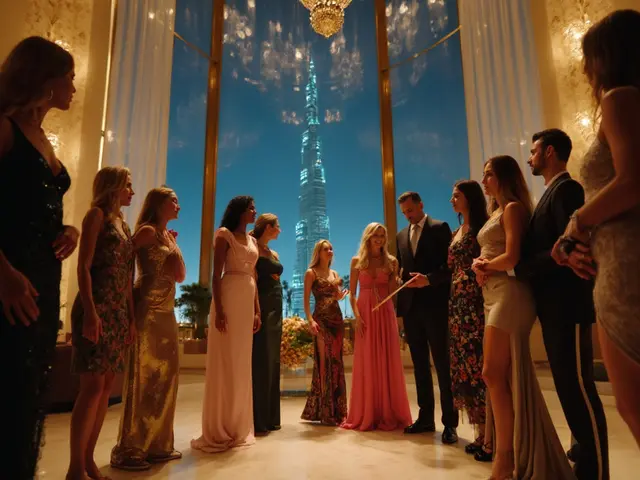![]()
Look around Dubai, and you’ll spot buildings that almost look like they defy gravity. But here’s the thing—each one stands solid on some serious science, not just flashy design. That’s no small feat, especially when the city deals with intense summer heat, strong winds, and the ever-present desert sand. Local engineers can’t just copy methods from Europe or North America; the ground here, the weather, and even local beliefs call for custom solutions.
If you’ve ever wondered why the Burj Khalifa doesn’t sway like a palm in a sandstorm or how the twisting Cayan Tower keeps its shape during scorching Junes, it’s all about understanding Dubai’s unique landscape and climate. Engineers here use clever foundations designed for sandy, sometimes salty earth. They rely on wind tunnel testing far more than colder cities because gusts hitting skyscrapers in the Gulf are no joke.
Whether you’re a Dubai resident eyeing new apartments or an expat developer scouting locations in Business Bay, the science behind these iconic structures matters. It impacts where you live, how safe you feel, and even your AC bills. Knowing what actually keeps towers upright helps cut through marketing buzz and lets you spot real value on a skyline full of bold claims.
- How Dubai’s Climate Shapes Building Design
- Engineering Tricks Used in Dubai’s Tallest Towers
- Cultural Influences: Building with Tradition in Mind
- Tips for Residents and Developers in Dubai
How Dubai’s Climate Shapes Building Design
Dubai sits bang in the middle of the desert, and its climate isn’t easy on buildings. Summer highs regularly break 45°C, with humidity spiking by the sea. These conditions force architects and engineers to get creative if they want their projects to last and keep people comfortable.
Building in Dubai means dealing with temperature swings that can easily crack regular concrete. That’s why local towers, malls, and even museums use mixes designed to handle extreme heat and cool down fast after sunset. Contractors also add insulation and use light-colored materials on exteriors to reflect sunlight, cutting down on the need for non-stop air conditioning.
Sand is another big headache. It can find its way into anything, from fine machinery to building joints. Structures like the Burj Al Arab or Expo City Dubai use sealed windows and advanced filtration systems. Outdoor surfaces are picked to stand up to abrasion from wind-blown sand, making local stone and tough composites a popular choice. Regular cleaning isn’t just for looks—on Sheikh Zayed Road, you’ll see cleaning crews working nonstop to keep glass facades clear and safe for the people below.
Humidity from the Gulf adds another twist. In places like the Dubai Creek Harbour, waterproofing matters as much as design. Everything from parking garages to high-rises must be sealed and ventilated to prevent mold and rust. Local codes have strict rules about waterproof membranes, especially in underground areas.
- Use of high-tech glass—Many Dubai skyscrapers rely on smart glass that tints itself when the sun is strongest, helping with indoor comfort and energy savings.
- Earthquake-resistant foundations—While Dubai isn’t a major quake zone, heavy piles and mat foundations keep buildings stable on soft, sometimes salty ground.
- Green building techniques—There’s a growing push for energy-saving designs like solar panels and shaded patios. Look no further than the designs at Sustainable City for real-world examples.
Dubai’s climate leaves no room for guesswork. Every Dubai architecture project needs to outsmart the heat, sand, and coastal air—otherwise, it just won’t last.
Engineering Tricks Used in Dubai’s Tallest Towers
Dubai’s skyline is something you don’t forget, with the Burj Khalifa towering over everything else. The thing is, keeping these tall giants steady in the desert takes some pretty smart moves. For starters, the Burj Khalifa sits on a deep concrete mat—almost 3.7 meters thick and supported by 192 massive piles driven more than 50 meters into the ground. This mat worked so well in Dubai’s sandy soil that it became a model for other mega-tall buildings in the region.
One key move is shaping the tower to fight wind. Burj Khalifa uses a ‘buttressed core’ design. This means there’s a Y-shaped concrete center that spreads out force, stopping the building from twisting or shaking during those strong shamal winds. It’s why you’ll never feel the building sway—at least not enough to spill your coffee. If you look over at Marina’s Cayan Tower, notice that twist? That’s not just for style. It helps redirect wind so it never hits the tower the same way twice, stopping those dangerous gusts from building up. The Museum of the Future, with its round, empty center, uses a steel diagrid structure—no columns inside at all. It’s a real feat, especially since traditional columns would mess up the design.
The climate throws another curveball. Heat expansion is a serious issue with steel and concrete. So, Dubai’s top towers have special joints—called expansion joints—that let them move a little when temperatures swing from 10°C in winter up to over 50°C in summer. This simple trick keeps cracks from forming and giant glass windows from shattering.
The table below shows some quick facts about stabilization systems used in these skyscrapers:
| Building | Height (m) | Main Stabilization Trick | Local Challenge Solved |
|---|---|---|---|
| Burj Khalifa | 828 | Buttressed core, deep foundation | Wind, sandy soil |
| Cayan Tower | 307 | Twisting shape | Wind redirection |
| Museum of the Future | 78 | Steel diagrid structure | Column-free interior, heat swings |
If you’re looking to develop or invest in Dubai, keep an eye out for these engineering details in project brochures or site tours. The right structural system not only keeps you safe but can cut your long-term maintenance bills, too. When you see ‘wind tunnel tested’ or ‘expansion joints’ listed in the specs, that’s not marketing fluff—it’s how these Dubai architecture icons handle some of the harshest building conditions anywhere.
Cultural Influences: Building with Tradition in Mind
When people think about Dubai’s crazy skyline, tradition isn’t always the first thing that comes to mind, but it absolutely shapes the city’s architecture. Walk into places like the Jumeirah Mosque or Sheikh Zayed Road’s high rises and you’ll spot design choices that honor local heritage. The arabesque patterns, pointed arches, and calligraphy on buildings come straight from centuries-old Islamic design. They aren’t just for show—these features shade windows, help with cooling, and fit in with what’s valued in Dubai.
Color matters, too. Lighter shades on building exteriors reflect harsh sunlight. Developers often use beige, white, and sand colors, echoing the traditional wind towers (barjeel) you can still see in Al Fahidi Historical Neighbourhood. Those wind towers aren’t just a throwback—they were an early form of natural air conditioning. Some new buildings in Dubai Marina and even in Expo City are reworking these concepts with a modern twist, combining old design with new tech to save energy.
Respecting culture goes beyond looks. Dubai has rules that make cultural respect a part of every project approval. For example, any residential building needs to have a clear distinction between private and public space, reflecting family values here. In luxury hotels like the Address Downtown, there are separate zones for men and women in some spa and gym areas, following local customs.
- Architects often consult with cultural advisors before they finalize plans for projects near mosques or in historic districts.
- Palm Jumeirah’s villas keep high walls and private courtyards, inspired by Emirati tradition while staying practical for modern families.
- New developments like Dubai Creek Harbour add community prayer rooms and majlis areas—a nod to regular practices like Friday prayers and social gatherings.
To see how deeply tradition shapes planning, check out this quick snapshot:
| Feature | Traditional Element | Modern Use in Dubai |
|---|---|---|
| Wind Towers (Barjeel) | Natural cooling, privacy | Reimagined in villas, Eco-friendly buildings |
| Majlis area | Space for guests, social meetings | Included in villas, community centers |
| Arabic geometric patterns | Sun shading, decoration | Façades of hotels, malls (e.g., Dubai Mall) |
This is why every Dubai architecture project isn’t just about height—it’s about honoring heritage and making sure towering ambitions fit the local way of life. If you’re planning a project or even picking a home, it’s smart to look for these features. They aren’t just nice details; they’re proof the building fits Dubai, not just the skyline.
Tips for Residents and Developers in Dubai
Living or building in Dubai means you need to know a few things that aren’t obvious if you’ve only been in cooler, less sandy places. So, what matters most when it comes to stability, comfort, and long-term building quality? Here’s what stands out.
- Dubai architecture has to deal with salty soil. That means good waterproofing and anti-corrosion materials are must-haves. Ask your developer about specific protection under the building, especially if you’re buying close to the coastline or in areas like Palm Jumeirah.
- High-rises face different wind loads compared to low buildings. If you’re a resident on a high floor, ask about the building’s dampers—these systems reduce how much the tower sways during strong shamal winds. You shouldn’t feel seasick in your own living room.
- Energy efficiency is a big deal. Glass can look great, but not all glass is equal. Check that your tower uses high-performance glazing—otherwise, your AC will struggle and your DEWA bill will be way higher than expected.
- If you’re developing, partner with firms with proven local experience—think Arabtec or ALEC—not just big international names. Regulations change fast here; local firms know DM (Dubai Municipality) requirements down to the smallest detail.
Now, these aren’t just random tips. Just look at the stats below that highlight why these details are key in Dubai.
| Factor | Dubai Benchmark or Stat |
|---|---|
| Average soil salinity | Higher than 6 dS/m (much higher than global urban average) |
| Peak wind speed (Burj Khalifa design) | Up to 55 m/s (approx. 200 km/h) |
| DEWA average residential cooling costs | Up to 60% of total energy bill in summer |
| Frequency of code updates | Major construction code changes every 2-3 years |
If you’re moving into a new place, always get a snag list checked by an independent inspector. In Dubai, this can save you serious headaches—from tiny leaks to bigger issues with insulation or mechanical systems. And if you’re a developer, those code changes above mean it pays to keep your team up-to-date with the latest master plans and safety rules. The city is constantly pushing for new records, but regulations are getting stricter for a reason—safety and efficiency matter more than ever.



